For any serious portraitist, capturing a powerful expression in the eyes in portrait photography can be the difference between a mediocre and an excellent shot.
If there is no captivating expression coming from the subject’s eyes it’s hard to make a memorable photograph, even if composition and lighting are perfect.
Human eyes are very expressive because they can portray a whole range of emotions, like strength, love, fear, confidence, playfulness and so on. It’s up to the photographer to spot the exact moment when these emotions start to arise in the subject’s eyes.
Except for the ability to understand the nature of human emotions, a photographer also needs to have good technical knowledge in order to depict the eyes in the best possible way.
Here are tips to consider if you want to learn how to photograph eyes properly!
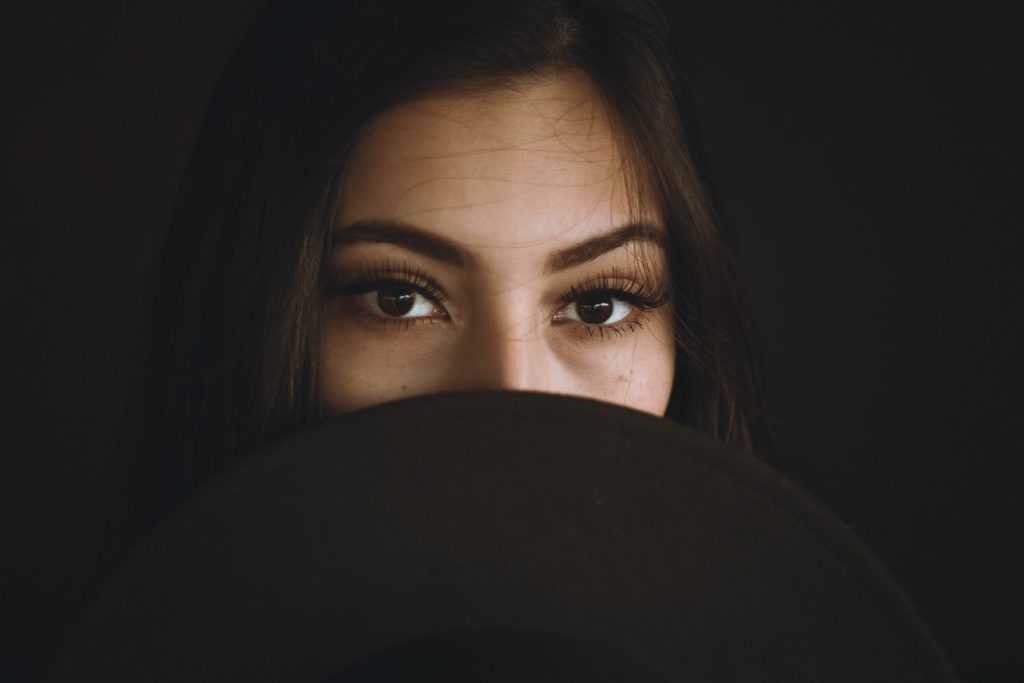
1. Above All, Make Sure The Eyes Are In Focus
When paying particular attention to the eyes in portrait photography, it is important to make sure they are in focus.
While this sounds obvious, the reason this may be tricky to achieve is that large apertures are typically used in portraits.
When the depth-of-field is shallow it takes extra effort to focus properly. It’s advisable to take multiple shots of the same scene while changing the position of the focal points.
A portrait with the eyes in focus will surely be more appealing and draw the viewer into the image, so it makes sense to work hard in order to achieve it.
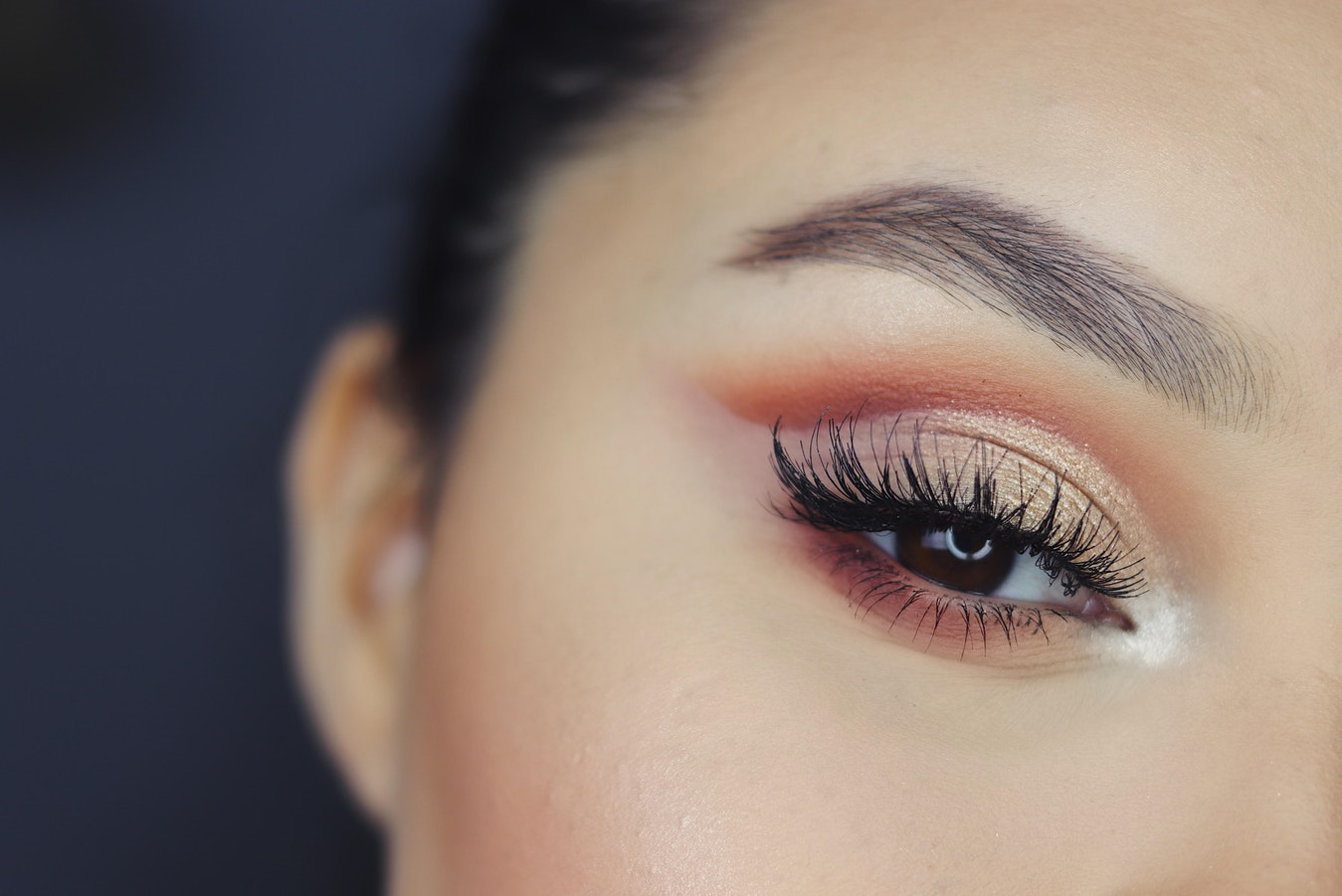
2. Avoid The Red-Eye Effect
Red eyes in portrait photography is the common appearance of red pupils in flash photography and it happens when the flash is mounted very close to the camera.
It’s easy to avoid this effect if you follow a few photographing tips:
- Move the flash off the camera – use a TTL flash cable or wireless triggers;
- Bounce the flash off the ceiling or walls;
- Use a diffuser to spread the light from the flash;
- Turn on red-eye reduction mode on your camera;
If nothing else works, you can always remove red eyes during post-processing.
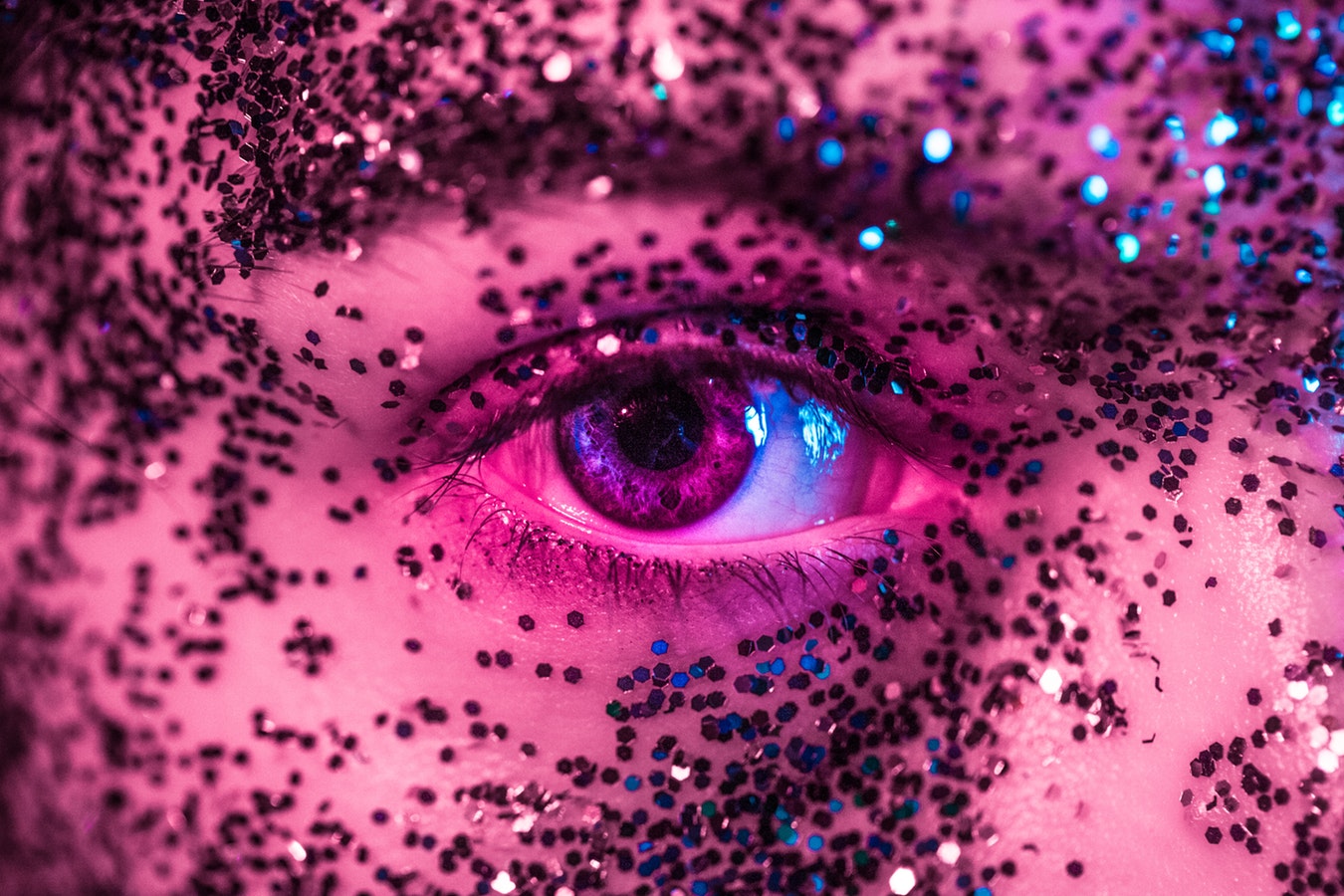
3. Emphasis The Position Of The Eyes In The Frame
You can follow (or break!) the classic rules of composition when positioning the subject’s eyes in a frame. While the rule of thirds is always a safe option, you can experiment and position the eyes in the very center of the frame or perhaps close to an edge of the frame to emphasize the negative space in your image.
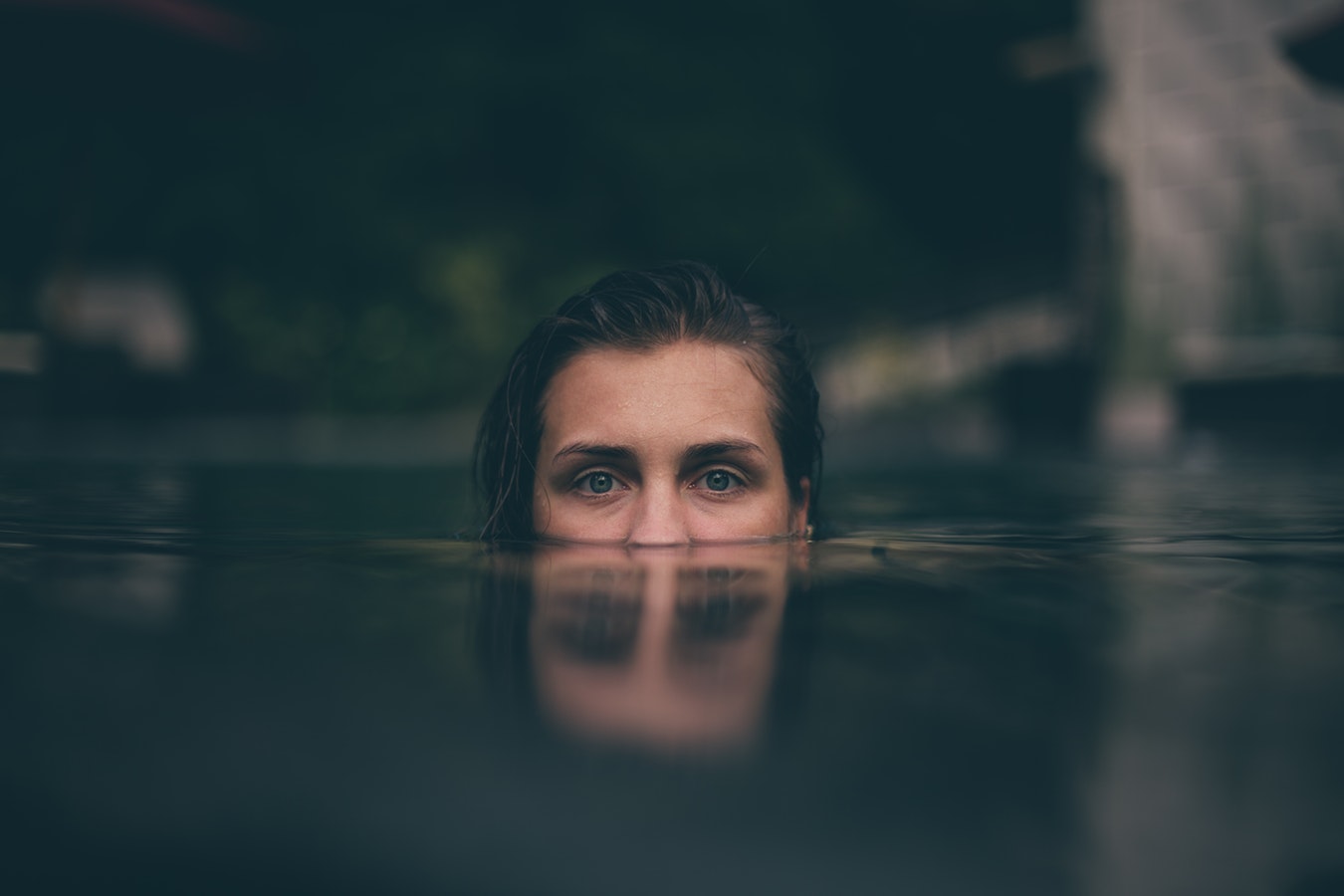
4. The Importance Of Catchlights
Catchlights are the highlights of a light source reflected off the surface of the eye. They are very versatile; they come in many shapes and sizes, depending on the shape and size of the light source itself.
Since catchlights are present in both outdoor and studio portraits, their role is quite important for capturing better eyes in portrait photography from the aesthetic point of view.
Catchlights add more drama to the image and in a way they make the portrait come to life.
Take a look at the list of these 6 tutorials that will help you add catchlights to the eyes!
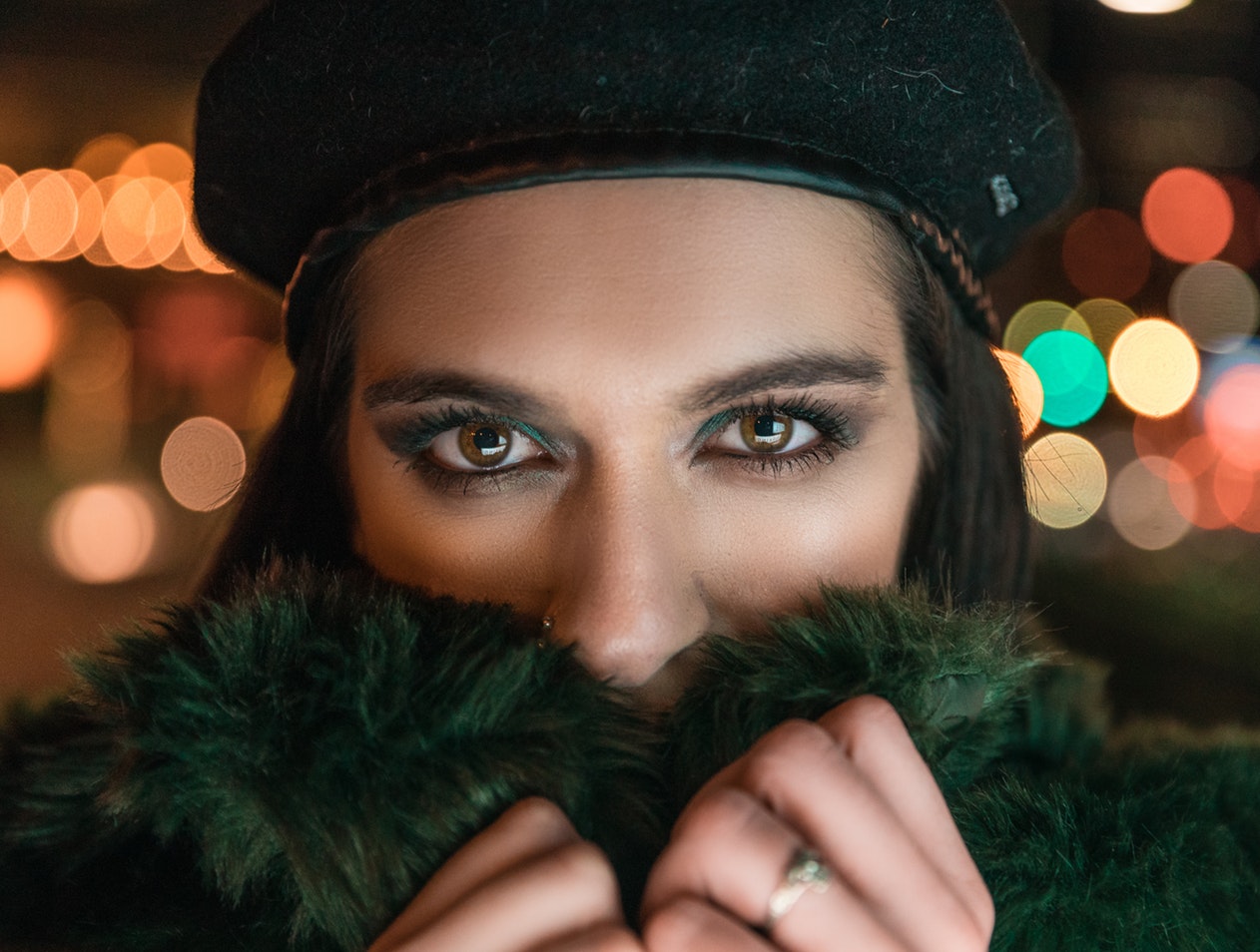
5. If You Are Focusing On The Eyes In Portrait Photography Then Make Eye Contact
While eye contact is not mandatory in portraits, it can certainly enhance the impact that the photograph has on the viewer.
It doesn’t matter if you’re a photojournalist or a wedding photographer – one of the most powerful ways to stir the viewer’s emotions is to depict the eye contact between the photographer and the subject or between various subjects.
Just like we’re used to looking our interlocutor in the eyes while speaking, the viewer tries to interact with the portrait by looking in the subject’s eyes.

6. Tell The Model What To Do
You should decide on the model’s eye direction while you’re composing the shot and tell your model what to do. Direct gaze into the lens will make a photograph very strong and emotional, but you don’t have to stick to this approach.
For instance, if you want to shoot the eyes from a different angle and create a softer impression, you can ask your model to look at a certain object (wall, window, chair and so on). Also, make sure to find a proper shooting angle.
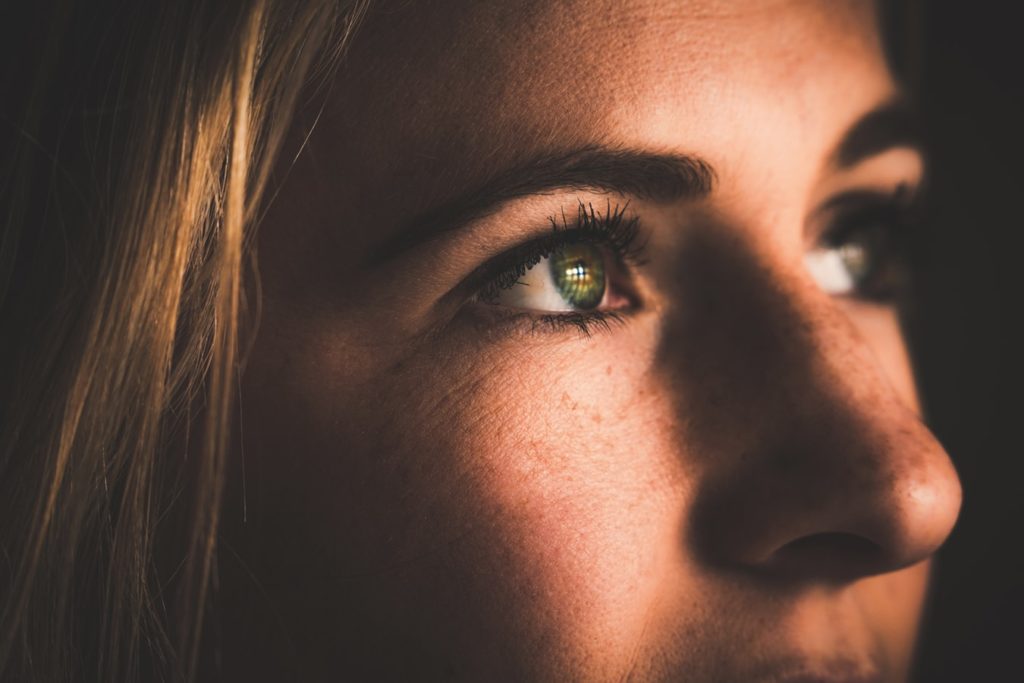
7. Lighting Matters A Lot!
In eye photography, proper lighting matters much more than a background choice. If you’re shooting your model at home, the best place is surely near the window because of diffused lighting. This type of soft lighting will enhance the natural color of the eyes and skin, which is quite important in portraiture.
In case you need to shoot in the evening with artificial lighting, the best option would be an external flash with a mini soft boc. Avoid a built-in flash even if you’re an amateur because it’s not a good choice for indoor portraiture.
If you don’t have an external flash, you can use a regular lamp as well. You should direct the light from the lamp carefully – it shouldn’t cast harsh shadows on your model’s face.
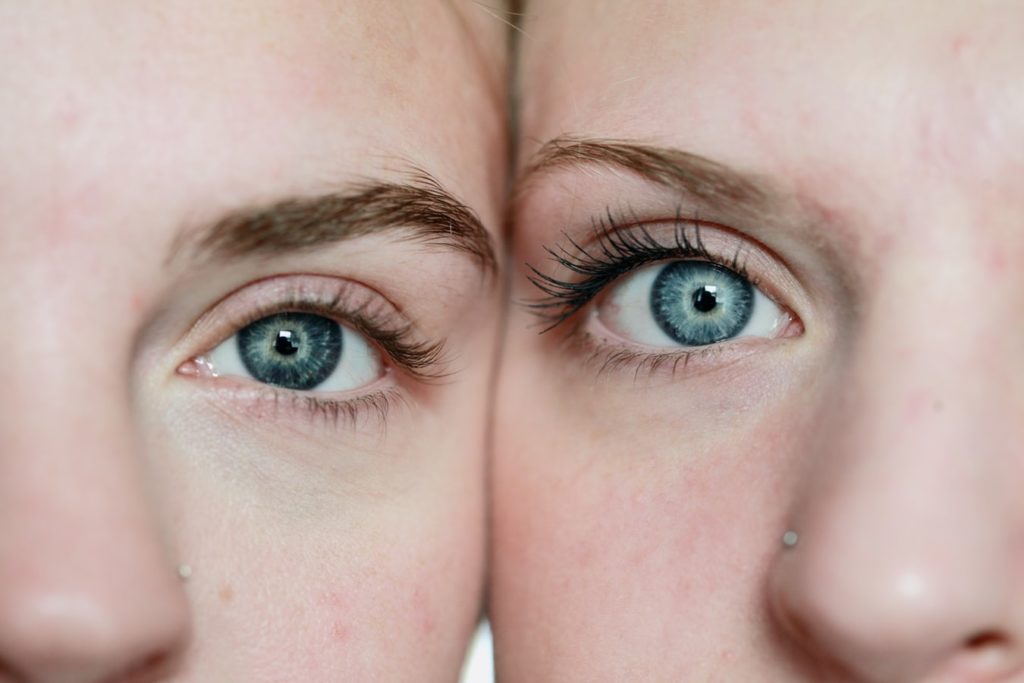
8. Use Makeup To Enhance Eyes
Skillfully applied makeup can certainly accentuate the beauty of human eyes. In case you’re not sure what kind of makeup suits your model best, you can consult a professional make-up artist.
Mascara and eyeliner can enhance the shape of the eyes, while eyeshadow can make the eye color more prominent. Just make sure to avoid overdoing makeup!

9. Capture Reflections In The Eyes
In addition to catchlights, you can capture various reflections in the eyes of your model. This is a great way to add a certain artistic vibe to your portraits. When it comes to reflections, there are many choices – you can capture another person, an object or even a landscape.
Capturing reflections can be particularly interesting in close-up eye photography – try to experiment with it! You might be surprised at the results.
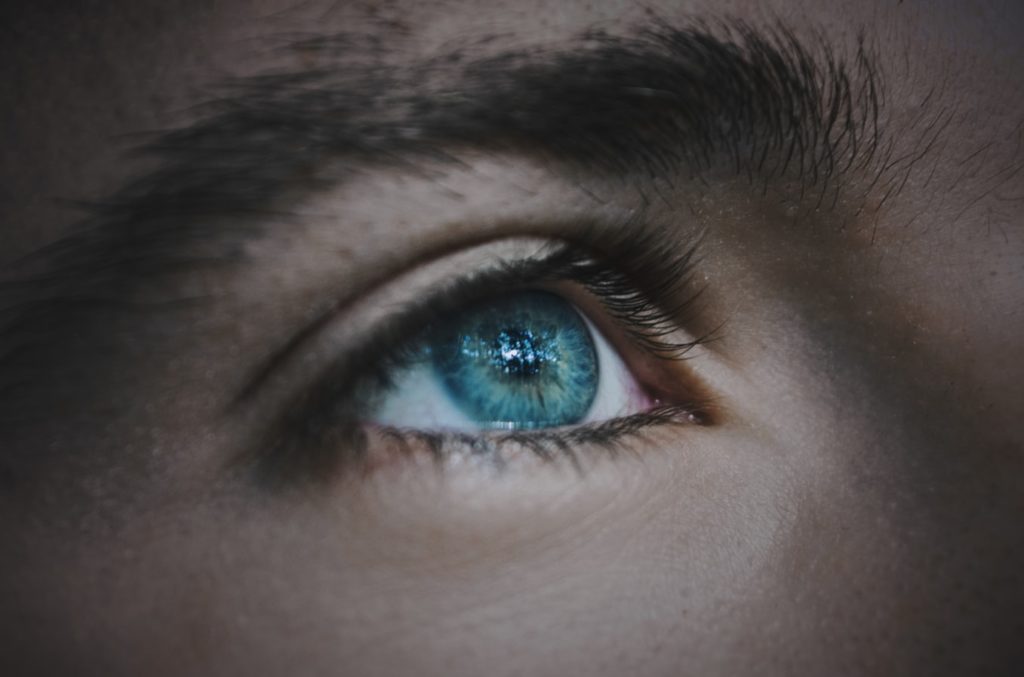
10. Eye Photography Post-Processing
Post-processing of the eyes should be done carefully and moderately since over-processed eyes tend to look really unnatural, even lifeless at times.
Some small but powerful adjustments can help draw the viewer's attention to the eyes. Lightening the whites of the eyes (with dodge tool) and applying additional sharpening to the eyes can work magic if done properly.
The same goes for enhancing the eye color by increasing saturation in either Lightroom or Photoshop.
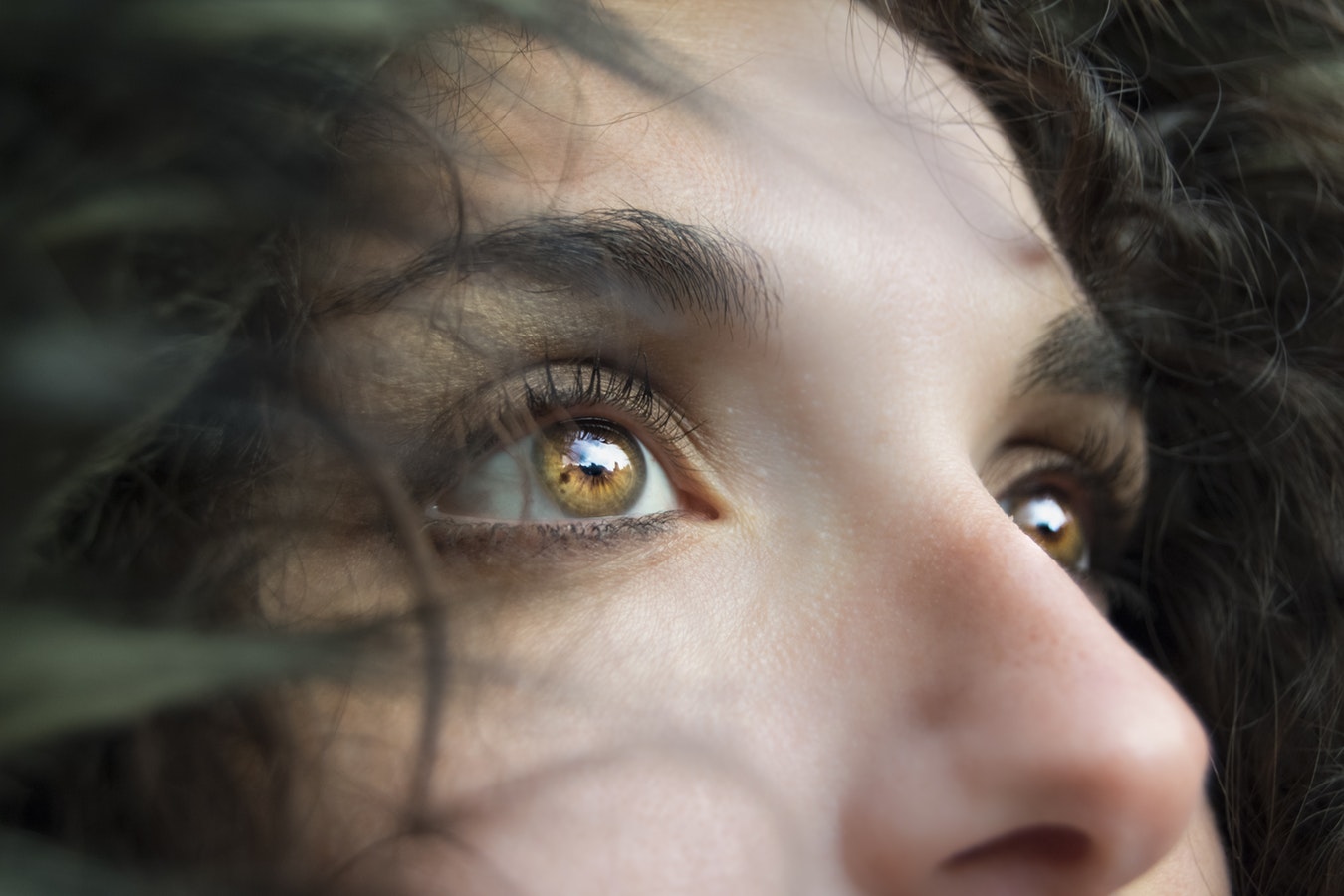
To sum it all up, in order to create a powerful portrait with the accent on eyes, it’s important to have in mind both technical and psychological factors. Every step from composition to post-processing matters a lot when it comes to creating a memorable eye photography.
If you want to understand light and take perfect portraits, be sure to check out The Art of Portrait Photography which covers these tips and dives a lot deeper
Further Resources
- Bite Size Tips: 3 Easy Tips For Sharper Eyes In Portraits
- The Secrets to Using Bounced Light to Make Your Photos Pop
- Why And How You Should Be Using Flash Gels To Make Your Portraits Pop
- 5 Free E-Books to Help You Get Better at Lighting in Photography
- Bite Size Tips: 5 Ways to Get Sharper Eyes In Your Portraits






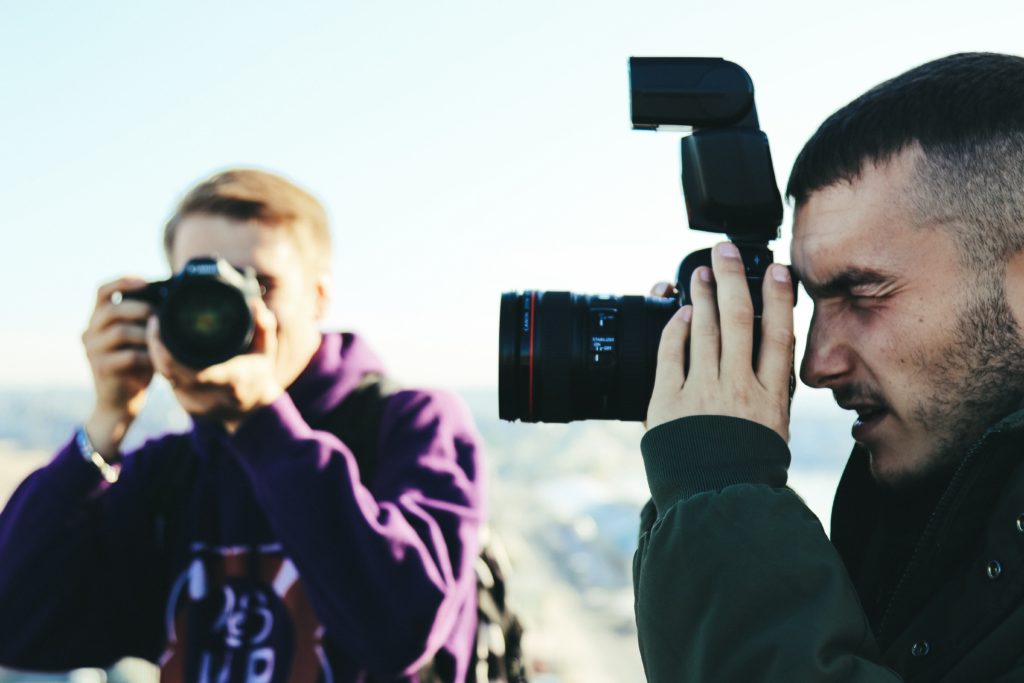
1 Comment
Absolutely 100% agree with #1! The number one issue with capturing eyes is nailing focus with a shallow depth of field! Whenever I am shooting f2.0 or below I will be sure to take several shots for any close-ups for just that very reason.